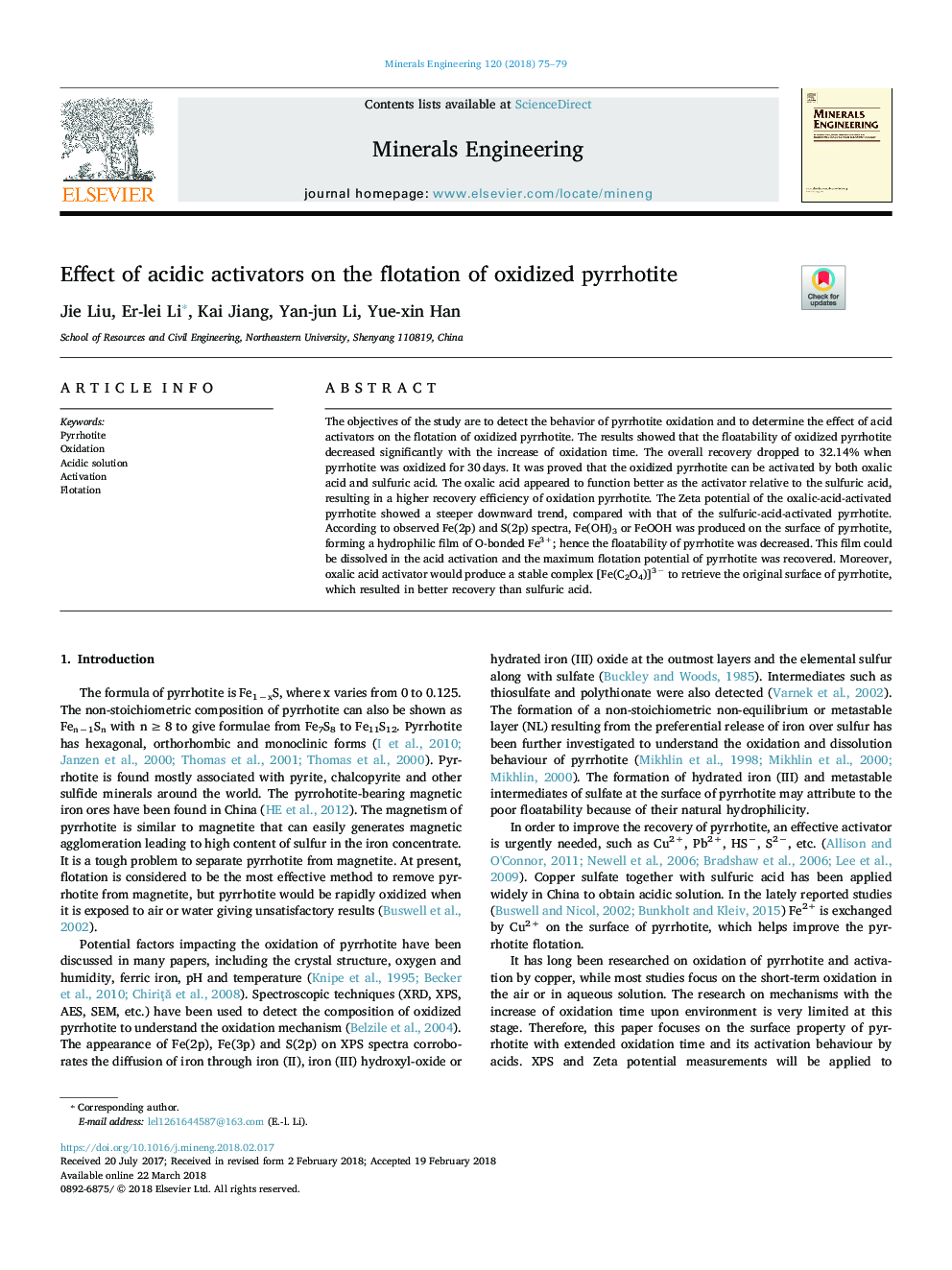| Article ID | Journal | Published Year | Pages | File Type |
|---|---|---|---|---|
| 6672425 | Minerals Engineering | 2018 | 5 Pages |
Abstract
The objectives of the study are to detect the behavior of pyrrhotite oxidation and to determine the effect of acid activators on the flotation of oxidized pyrrhotite. The results showed that the floatability of oxidized pyrrhotite decreased significantly with the increase of oxidation time. The overall recovery dropped to 32.14% when pyrrhotite was oxidized for 30â¯days. It was proved that the oxidized pyrrhotite can be activated by both oxalic acid and sulfuric acid. The oxalic acid appeared to function better as the activator relative to the sulfuric acid, resulting in a higher recovery efficiency of oxidation pyrrhotite. The Zeta potential of the oxalic-acid-activated pyrrhotite showed a steeper downward trend, compared with that of the sulfuric-acid-activated pyrrhotite. According to observed Fe(2p) and S(2p) spectra, Fe(OH)3 or FeOOH was produced on the surface of pyrrhotite, forming a hydrophilic film of O-bonded Fe3+; hence the floatability of pyrrhotite was decreased. This film could be dissolved in the acid activation and the maximum flotation potential of pyrrhotite was recovered. Moreover, oxalic acid activator would produce a stable complex [Fe(C2O4)]3â to retrieve the original surface of pyrrhotite, which resulted in better recovery than sulfuric acid.
Related Topics
Physical Sciences and Engineering
Chemical Engineering
Chemical Engineering (General)
Authors
Jie Liu, Er-lei Li, Kai Jiang, Yan-jun Li, Yue-xin Han,
